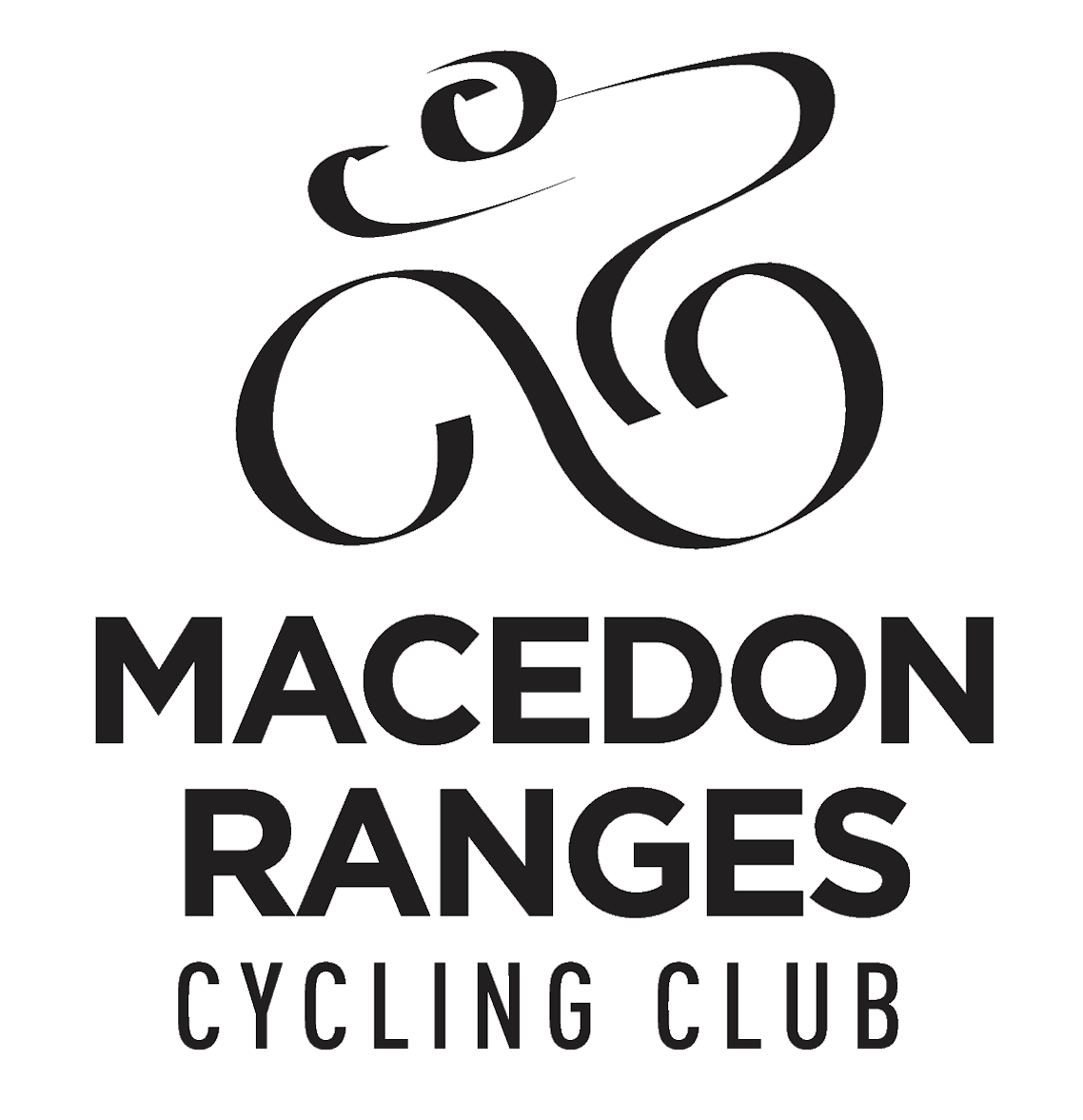The MRCC has developed this code in the expectation that club members and visiting riders be familiar with and follow Victorian road laws and common sense riding practices. The code is not meant to be comprehensive, but contains a range of expectations and guidelines to help make the riding experience safe and enjoyable.
This Code of Safe Cycling Practice can be downloaded in pdf format, suitable for printing, at: Code of Safe Cycling Practice V2.0.
Further information about Bike Laws can be found on this website at: Victorian Bike Law.
Code of Safe Cycling Practice
Version 2.0 April, 2016
ROAD LAWS
The legislated road laws, including traffic signals (lights and signs), apply to all road users including cyclists, and should be complied with at all times. Apart from the issues of legal penalties and safety, failure to obey road laws generates bad will towards cyclists.
All bikes are legally required to have working brakes and a bell or horn.
It is a breach of road law for cyclists to ride more than two abreast (unless briefly passing when safe to do so, and not crossing double lines). Riders may ride two abreast, as long as the maximum distance between them is 1.5 metres.
Riders should use common sense. For example, be alert to situations where it is unsafe to ride two abreast. Be wary of riding two abreast adjacent to double lines – especially if riding towards a bend or a crest. At all times treat fellow cyclists, vehicle drivers, and pedestrians with courtesy and respect. Always ride defensively, and don’t take other road users’ behaviour for granted. Remember that as a cyclist, you are very vulnerable and have scant protection in the event of a fall or collision.
Your personal safety should be your number 1 goal and responsibility.
VISIBILITY
It is essential that your clothing provides high visibility. Please consider the colour of your cycling clothing. It is a legal requirement at night and in low visibility conditions, e.g. fog, mist, rain etc. to have:
- a white front light, visible from 200 metres.
- red rear light, visible from 200 metres.
- a red reflector on the back visible from 50 metres.
The Club strongly recommends that you use a good quality rear light at all times. Flashing LED lights are very effective. Ask Club members for information on examples of models available. Reviews can be found on the Bicycle Network website www.bicyclenetwork.com.au/, look under Resources and Advice – Bicycle Maintenance.
HALF WHEELING (REAR WHEEL/FRONT WHEEL OVERLAP)
A lot of riding accidents are caused as a consequence of rear wheel against front wheel collisions. You should not allow your front wheel to pass beyond the rear wheel of the rider in front of you unless you are passing, which should be completed from a safe distance to allow for unexpected/unforseen sideways movements.
Even very experienced riders should not be any closer than 150cm (6inches) behind another rider.
Most riders should leave 500mm (1/2 metre) from the rear tyre in front of you.
Ride either parallel with the other rider (i.e. two abreast) or behind them, not half way (half wheeling).
HAND SIGNALS AND VERBAL COMMUNICATION
Verbal communication is essential.
- A loud call of “stopping” or “slowing” will alert a rider behind you who may miss a hand signal.
- Calling “car back” or “car up” to indicate that a vehicle(s) is approaching from either in front or the rear.
- It is also appropriate to call “passing” if you are about to pass the rider(s) in front of you. If necessary, use your bell.
Hand signals exemplify good riding practice. Some commonly used are:
- clearly pointing with your hand and fingers to items like road cracks, sticks, grill covers, potholes, bumps, etc.
- clearly using your arm and hand in a “scattering” motion to indicate the danger of scattered glass, sand, gravel and stones or other road surface dangers
use of a rear facing hand (left or right) to indicate that you are about to slow down (in addition to calling loudly “slowing “ or “stopping”) . Always ride to the far left side of the road. Be aware of the possibility of having to avoid unexpected road obstacles and leave space to diverge to the left, to avoid moving into the path of traffic on your right.
RIGHT HAND TURNS AND ROUNDABOUTS
It is safest to diverge into the middle of the lane when approaching a roundabout – but first check for traffic immediately behind you. It is then clear to motorists that you intend to use the roundabout. Always give a hand signal when turning. Use eye contact where possible.
A right hand turn at a normal intersection is best completed from just left of the centre of the road (after you have indicated and safely diverged from the left of the road). This allows vehicles to pass on your left whilst you are waiting for any oncoming traffic before completing your turn. Once again, use a hand signal.
LEFT HAND TURNS
If you are turning left at a roundabout or other intersection, it is safer to wait your turn behind vehicles or other cyclists in front of you. You will be in the blind spot of a left turning vehicle if you proceed to the head of the queue and attempt to turn ahead of, or simultaneously, with the left turning vehicle.
Passing vehicles or riders on the left can be dangerous, and should be undertaken with extra care. Cyclists in front of you are more likely to swerve or diverge left to avoid traffic and obstacles, and will normally not be expecting a passing cyclist on the inside.
GROUPS OF CYCLISTS
Club social rides are usually structured to allow riders of different abilities to regroup. Regrouping can present safety problems and obstruct traffic if not managed appropriately.
Basic requirements are:
- Congregate no closer than 20 metres from an intersection or T section corner
- Stand on the left of your bike (thereby having a much safer view of the road and possible oncoming traffic).
- The bike should be 1m clear of the road edge if possible.
When resuming riding, be conscious of what other riders around you are doing. A good practice is to be astride your bike with your right foot forward in the “power position” to maximise control of your bike (the power position is where your right foot is on the pedal with the pedal raised to facilitate propulsion. )
USE OF PHONES, IPODS AND CAMERAS WHILST RIDING
Use of these and similar items whilst riding a bicycle is either unsafe or unlawful, or both. If illegal, club members are not permitted to use the item whilst riding with the club. Ipods and similar devices will restrict the ability of cyclists to hear alerts from fellow cyclists or other road noises and are not permitted on club rides.
HELMETS
Helmets are designed to act like a second external skull – they must be fitted and fastened properly.
1. Always wear a helmet irrespective of how short a distance you are travelling.
2. Your helmet must meet Australian safety standard AS/NZS 2063 (check the sticker inside your helmet.) Police periodically check for compliance.
Some tips for fit:
- straps should be adjusted so they form a close V under each ear lobe
- 2 fingers should fit between the strap and your chin; this should be periodically checked as helmet straps have a habit of loosening and/or stretching
- 2 fingers distance between your eyes and helmet.
- Unfastened, you should be able to lean forward without your helmet coming off.
- Regularly inspect your helmet’s internal polystyrene shell for cracks (use your hands to apply serious pressure at both the front and back to squeeze the sides together. If even a hairline crack is visible then your helmet is unsafe.
- If you have had an incident where your helmet has come into forceful contact with a road surface, most likely the helmet should be replaced. Just not worth the risk if you want to continue safe riding.
WATCH OUT FOR FELLOW CYCLISTS
Club rides cater for varying abilities. We ask that riders watch out for and support each other. No rider should be unaccounted for on a ride, and a head count should be completed at each stop to ensure that no rider is left behind. Additionally, riders becoming tired can be more prone to errors of judgement, so try to monitor your fellow riders, maintain alertness, and also ride within your own limitations.
It is the responsibility of all riders to ensure that our club complies with its own rules and with the legal requirements of cycling.
For further information on Victorian bike laws and other essentials of bike riding see our page http://macedonrangescycling.org.au/victorian-bike-law/ which has links to the booklet “Bike Law” produced by the Victorian Law Foundation.

